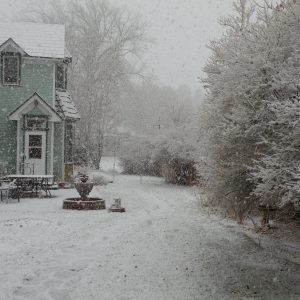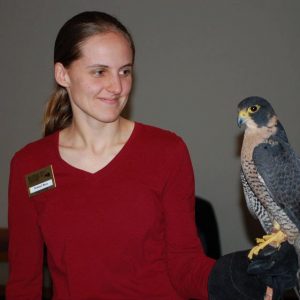Well, I am still here. It’s been snowing from time to time, and field work for me is scarce. Mostly I spend my days on GIS mapping projects and summarizing sage grouse count data, but occasionally I get to help out with a field project controlling invasive Russian olive and salt cedar with herbicides. There’s just nothing like good old fashioned manual labor in zero degree temperatures! Then again, although it’s hard work carrying around a backpack sprayer that’s almost half my body weight and made to be carried by broader shoulders over uneven terrain in the winter, after about 20 minutes of walking around that way we’re all toasty warm. Sore shoulders aside, it’s good to earn your supper once in a while.
Another work activity has been sending out letters to past volunteers for the Mid-Winter Eagle Survey to see who is game for participating in the survey next month. Responses keep rolling in, and soon it will be time to send out route maps and information and contact the people who haven’t responded yet. The survey will be on the last day of the first part of my internship, and I can’t believe it’s coming up so fast.
Volunteer activities with the Greater Yellowstone Raptor Experience program and the local animal shelter continue, which make me all the more excited to come back next year after my 2 month break in January. I anxiously await the arrival in the mail of my very own raptor glove for working with the birds at the Buffalo Bill Historical Center here in town. That has been one of the coolest things I’ve ever done, and I have the CLM program to thank for placing me here for this internship where I get to do all these cool things! (at work and beyond) It’s been a completely satisfying, valuable, and irreplaceable experience.







 Transformation in the desert: sagebrush sheds its seed, as I do the last seed collections of the year in the biting dry wind of the southeast Oregon winter. No significant snow yet, perfect for my final excursions around the resource area spent searching and reflecting. Passing along all of the places I visited for the first time this field season and trying to remember how it used to be warm and even hot. It’s pretty quiet now, and most plants are pretty much hibernating. I’m sure I’ll feel like hibernating too once it starts to snow and gets below zero. But for now I’ll just coast along the empty highways with plant press handy and watch the sun reach all of the beautiful places.
Transformation in the desert: sagebrush sheds its seed, as I do the last seed collections of the year in the biting dry wind of the southeast Oregon winter. No significant snow yet, perfect for my final excursions around the resource area spent searching and reflecting. Passing along all of the places I visited for the first time this field season and trying to remember how it used to be warm and even hot. It’s pretty quiet now, and most plants are pretty much hibernating. I’m sure I’ll feel like hibernating too once it starts to snow and gets below zero. But for now I’ll just coast along the empty highways with plant press handy and watch the sun reach all of the beautiful places.

